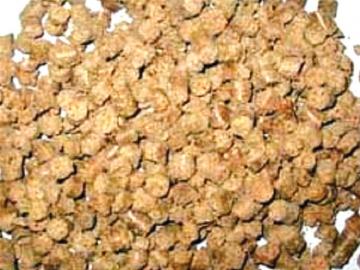
Palm kernel meal (Elaeis guineensis)
Synonyms: Elaeis melanococca, Elaeis madagascariensis Common names: African oil palm, Macaw fat
African oil palm is native to the rain-forests of West Africa. It is a tall tree, 8.3-20 m in height, erect, heavy with ringed trunk. Palm flour of good quality is obtained when the trees are cut before flowering (at the age of 60 years). The pith of tree is cut into small pieces, dried and powdered to get the palm flour. The fruit of palm grows in bunches and consists of a soft outer skin, which is reddish orange when ripe, and a fibrous layer covering the nut, composed of a shell and a kernel containing the palm oil.
Nutritive value: It contains 20% CP and 60% TDN. The fibre content is about 8%. This is low in protein but very rich in NFE. Therefore, it can be used as source of energy. Palm kernel meal is rich in sulphur containing amino acids.
Inclusion
Palm kernel cake is dry and gritty and is not readily accepted by all types of stock. It is largely used for feeding cattle and tends to produce a firm butter when fed to dairy cattle. A ration of 2-5 kg/day has been found satisfactory for adult cattle (AFRIS, FAO). Solvent- extracted meal is particularly unpalatable and must therefore be mixed with well-liked feeds, such as molasses, and fed in gradually increasing proportions. It is, however, a safe and wholesome material, and if reasonable care is taken in the arrangement of the feeding, it is readily eaten. No much study in India has been done with palm flour feeding in cattle, but the proximate composition suggests that this can be used in cattle for growth and production with economic gains.
